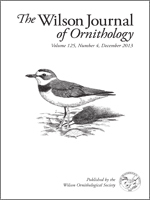Mexican Spotted Owls (Strix occidentalis lucida) occupy forest-dominated environments but also inhabit rocky canyonlands. I studied the owls' diet in canyon habitats in southern Utah and northern Arizona (1991–2007), and in mixed-conifer forest in the Rincon Mountains of southeast Arizona (1996–1997). I identified 3,315 prey items in regurgitated pellets from 38 pairs of owls in canyon habitat, and 383 prey items from 5 pairs in the Rincon Mountains. In canyons and forests, vertebrates dominated owl diets (97–99% of total prey biomass) with mammals accounting for 91–92% of prey biomass. In canyons, mammalian prey was primarily woodrats (Neotoma spp., 79% biomass), followed by white-footed mice (Peromyscus spp., 11%), and cottontail rabbits (Sylvilagus spp., 5%). In forest habitat, woodrats comprised 54% of biomass, followed by Botta's pocket gophers (Thomomys bottae, 13%), and cottontail rabbits (11%). For nine owl territories in three canyon regions in Utah, diets varied among the owl pairs with contribution to total prey biomass by woodrats ranging from 65–91%, typically followed by white-footed mice ranging from 13–19%. In both canyon and forest study areas, a variety of prey were consumed in addition to murids, including rabbits, pocket gophers, sciurids (Tamias spp.), heteromyids (e.g., Perognathus spp.), various bats (Vespertilionidae), shrews (Sorex spp.), small passerine birds, and numerous arthropods.
How to translate text using browser tools
1 December 2013
Diet of Mexican Spotted Owls in Utah and Arizona
David W. Willey
ACCESS THE FULL ARTICLE
Arizona
canyons
diet
habitat
Mexican spotted owl
Strix occidentalis lucida
Utah





